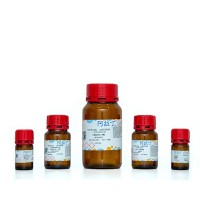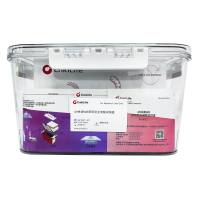Protein blotting simply involves transferring separated protein bands from an acrylamide gel onto a more stable and immobilizing medium, such as nitrocellulose paper. Once transferred to the immobilizing medium, a variety of analytical procedures may be carried out on the proteins that would otherwise have proved difficult or impossible in the gel. Such procedures may include hybridization with labeled DNA or RNA probes, detection with antibodies (as used in this experiment), detection by specific staining procedures, autoradiographic assay, and so on. The approach used here is exactly analogous to the method used to transfer DNA from agarose gels (the Southern Blot,
see Chapter 5) and has been given the name “Western” blotting (
1 –
3 ). There are a number of advantages to working with a protein blot rather than the original gel. These include:
|
1. |
Rapid staining/destaining: once transferred, staining and destaining can be achieved within 5 min. |
|
2. |
There is no ampholyte staining when analyzing IEF gels. |
|
3. |
Samples in preparative gels may be located rapidly by briefly blotting the gel. |
|
4. |
Low concentrations of samples can be detected since they are not spread throughout the thickness of a gel, but “concentrated” at the surface of the paper. As a consequence, it is possible to use lower specific activities and lower concentrations of expensive or scarce probes. |
|
5. |
The “blot” is a convenient permanent record of the gel run. |








